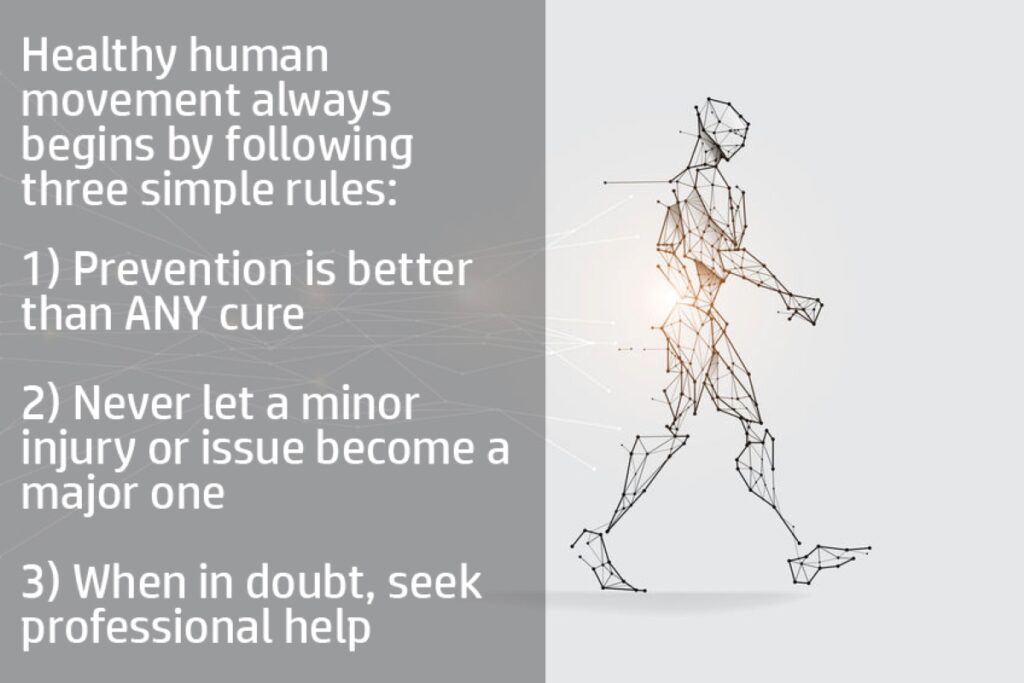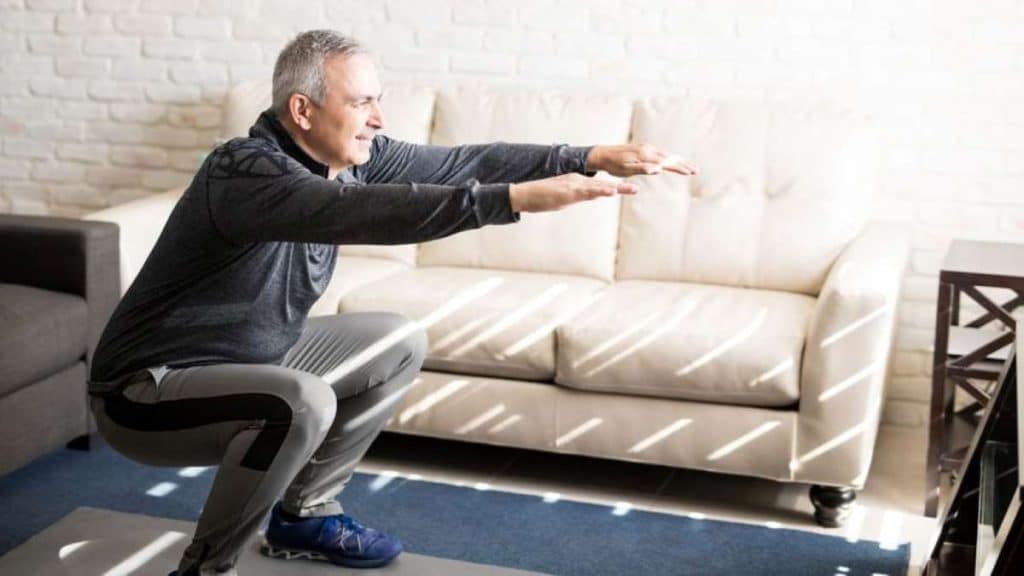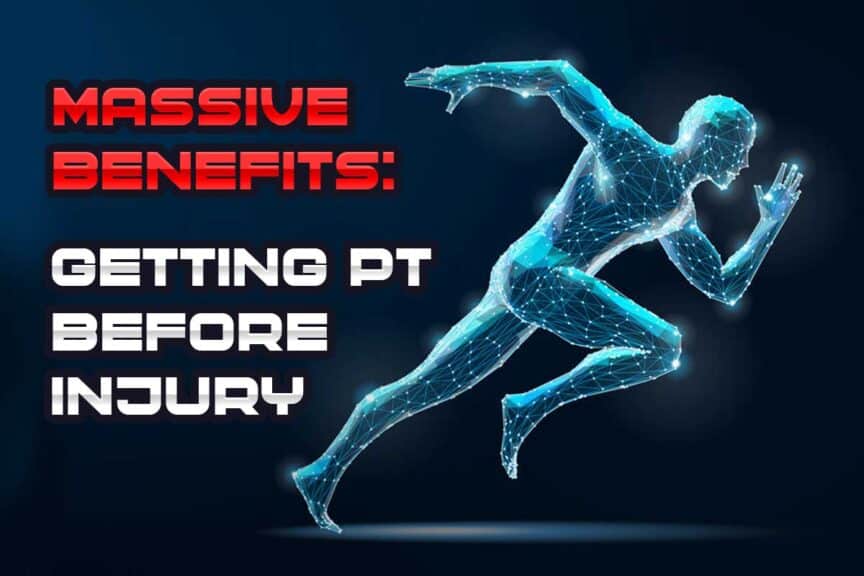Believe it or not, one of the best things you can do is go to physical therapy when you’re not injured; physical therapists are specially trained to identify and treat areas of movement dysfunction before they become painful or problematic issues.
If you aren’t in pain or haven’t been injured but you feel like something isn’t right with your movement, seeing a physical therapist is a smart move to make. Some of the best reasons to consider seeing a physical therapist even if you’re not injured or in pain include:
- You’re finding that one particular movement (or more than one) just doesn’t feel quite right; it feels different than it used to.
- You feel like the range of motion in one of your limbs isn’t quite the same as the other one.
- You’re thinking of (or are already) getting more physically active after a long period of physical inactivity.
- You have had a previous moderate or major injury to a body part in the past but haven’t looked after it since.
I’ll be discussing these reasons (and their benefits) in expanded detail below, so be sure to keep reading!

It all starts with three central rules to live by
There are three central rules that we as physical therapists ask our patients to live by:
- Prevention is better than ANY cure
- Never let a minor issue become a major one
- When in doubt, seek professional help
The theme of this particular blog post is all about living by and respecting these three rules. The fact of the matter is that the longer an issue is ignored and allowed to persist, the more time and effort it usually takes to get it under control and resolved. Since chronic issues (issues that have persisted for many months on end) tend to be more stubborn to take care of, you want to get them addressed while they’re still new and haven’t yet blown up into something worse. And what’s better than having to deal with a minor issue? You guessed it: never having an issue in the first place.
In essence, the best time to address and fix an issue with your body is before it becomes an issue (and if it already is an issue, get it addressed before it gets worse). But if it’s not an issue, how exactly do you know that you may need to get something addressed?
Here are some tell-tale signs that it may be worth getting an evaluation from a physical therapist in order to prevent a potentially problematic issue from arising:
Sign 1: You’re finding that one particular movement (or more than one) just doesn’t feel quite right

If you’ve ever felt like there’s a movement or two that just doesn’t quite feel right (or doesn’t feel the same as it used to) when you’re doing an activity or moving around in general, and it feels this way on a repeated basis, it can be worth getting checked out. Maybe your back just feels tighter than it should when you do certain movements, or perhaps one of your arms just seems to have a harder time moving than the other when reaching overhead.
While movement dysfunction can be found in anyone above the age of about sixteen years, simply trying to ignore something in your body that doesn’t quite feel right may in fact just lead to more pain and/or further dysfunction down the road.
This isn’t to say that you need to be drastically concerned if something doesn’t feel right; many times these things can work themselves out on their own with a bit of time and healthy movement. But if something is lingering around (or getting worse) and/or your intuition just seems to tell you that it’s worth getting checked out, then it’s likely best to do so.
What’s great about this approach is that by being pre-emptive you are likely to only need just a single treatment or couple of treatments at most. Your therapist can show you what’s going on, why it’s happening and how to address it through home exercises and activities. This sure beats the alternative of having to attend numerous treatment sessions once the problem has become painful and/or gotten out of hand!
Remember, warning signs don’t have to be painful for them to be warning signs.
Sign 2: You feel like the range of motion in one of your limbs isn’t quite the same as the other one

One of the strongest predictors physical therapists (and other healthcare practitioners) have regarding the likelihood of an individual sustaining an injury is how differently that individual’s body is moving from one side compared to the other.
Pro tip: While having some rather minimal movement discrepancies from one side of your body to the other can be somewhat common, moderate or major differences are not beneficial or ideal. The greater the discrepancy becomes, the higher the likelihood of future injury.
If you’re someone who enjoys being athletic or physically active at higher intensities, this is an even bigger issue to be aware of. It’s analogous to having the left side of your car’s tires under-inflated while the right side tires are over-inflated only then to drive down the highway at highway speeds.
And while these movement discrepancies can be painless, it’s likely a matter of time before they become painful (to one extent or another) if left untreated.
Seeing a physical therapist again makes perfect sense here; they can likely identify why you’re not moving the same from one side to the other and give you the right exercises, information and activities to do at home so that you start to even out your movement. This will greatly reduce your chance of future injury.
Sign 3: You’re thinking of (or are already) getting more physically active after a long period of physical inactivity

It’s super awesome if you’re wanting to or getting ready to become more physically active! I wish more people would choose to do the same.
While most people who are wanting to become more physically active will see their family doctor (which they definitely should do) in order to get the “green light” with proceeding to do so, getting checked out by a physical therapist may also be something you want to consider in addition to seeing your MD. This can be especially true if you’ve been inactive or sedentary for an extended period of time.
Think of it this way: if you’ve had a car or vehicle just sitting in a garage for years and years on end without really using it, chances are you’d want to take a quick look under the hood before you took it out on the road in order to avoid some potential breakdowns.
Physical therapists are really good at “taking a look under the hood” when it comes to spotting areas of potential orthopedic breakdown on the body. (Orthopedic just refers to muscles, bones and joints of the body.) Aside from giving you professional information on how to best proceed with some of your initial physical activities, we can find areas that are more susceptible to “breaking down” as you become more active.
Spotting these breakdowns before they happen and correcting them before you get injured can not only save you from a ton of physical pain, but also from the frustration that comes along with being sidelined from the activities that you enjoy.
Side note: I’ve got a great article on how certain physical therapists can help you lose weight, if that’s something you’re hoping to achieve: Can Physical Therapy Help Me Lose Weight?
Sign 4: You have had a previous injury to a body part in the past but haven’t looked after it since

We all face injuries throughout our lives, with some being more substantial than others. Minor injuries (a slight muscle pull or bruising your elbow) are the ones we often tend to completely forget about, and rightfully so – they’re usually not worth remembering.
Major injuries, however are quite different. Even if you no longer have pain from a major injury you’re still at an increased risk of sustaining a future injury to that region at some point in the future.
Previous injury is the number one greatest predictor for the chances of someone sustaining a future injury.
If you’d like to read up more on the literature regarding this phenomenon, here is a link to a systematic review discussing the very nature of this phenomenon:
This is NOT to say that you WILL incur future injury, and it’s certainly not meant to instill fear within you. Rather, this is said so that you can be mindful of the fact that there is a direct correlation between major injury and re-occurrence of injury for that body part or structure later on down the road.
For the record, major injuries can be thought of as events like surgeries, injuries that required you to take extended time off from work, injuries that resulted in very high levels of pain/physical discomfort, injuries that moderately or severely impaired your ability to move or perform activities of daily living for some period of time or injuries that left you moving differently after you recovered.
Again, hopefully you’re no longer in any pain from that injury (being in pain isn’t cool), but even if you feel like you’re back to 100% pre-injury status, there’s likely an elevated likelihood that you’re going to be at an increased risk for re-injuring that structure in the future.
So how does a physical therapist fit into this scenario?
Physical therapists understand musculoskeletal injuries (injuries involving muscles and bones) pretty well. We’re well trained on how injuries behave as well as how to best address them.
Whether you’re moving well and are pain-free from your old injury or you still have some nagging pain and decreased movement abilities, us PT’s are experts at showing you what needs to be done in order to make sure that any future re-occurrence of your injury becomes less likely to happen.
It may be through helping you better understand what you should do more of or less of, or it may be through helping you come up with an exercise routine, or an appropriate mobility routine. We tailor it based on what we find when we evaluate your movements as well as what you’re hoping to get out of the evaluation itself.
Concluding remarks
You certainly don’t need to go to physical therapy or get examined by a physical therapist if you aren’t having any pain or don’t have any injuries. But if your movements just aren’t feeling quite right as of lately, or your finding that you’re moving a little bit different from one side of your body to the other, then there is likely something to be gained by an evaluation from a physical therapist.
The name of the game is injury prevention, and modern science knows enough about the body to know how to best predict the likelihood of an individual sustaining a future injury even when they’re not currently injured.
So, it can be worth getting professional advice from a physical therapist if you’re wanting to learn how to address some non-painful movement issues that you may be experiencing; they can help you understand what’s going on and what you can do to eliminate it before it becomes a bigger problem.
Above all else, remember the three rules:
- Prevention is better than any cure
- Never let a minor injury become a major one
- When in doubt, seek professional help
Move well and live bold.
Related Articles:
- Physical Therapy Exercises: Here’s How to Stick to Them for Success
- How to Prepare for Your First Physical Therapy Appointment
- Five Massive Reasons Why Physical Therapy is Important After an Injury
- What to Expect for Your First Physical Therapy Appointment
- Can Physical Therapy Help Me Lose Weight?

Hi! I’m Jim Wittstrom, PT, DPT, CSCS, Pn1.
I am a physical therapist who is passionate about all things pertaining to strength & conditioning, human movement, injury prevention and rehabilitation. I created StrengthResurgence.com in order to help others become stronger and healthier. I also love helping aspiring students and therapists fulfill their dreams of becoming successful in school and within their clinical PT practice. Thanks for checking out my site!

